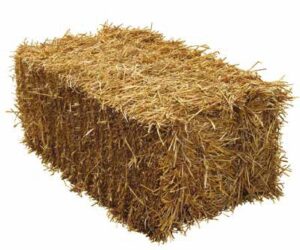Putting strawbales into watercourses is not the solution in the event of a diffuse pollution incident. While we don’t often see this on site, we do hear reference to throwing a few strawbales in streams when muddy water is in danger of entering a watercourse. The watercourse is the ‘receptor’ we are trying to protect. The pollution has already happened if the strawbale has to be put in the stream.
Your best friend here can often be the unassuming spade.
When muddy water is threatening to overwhelm sumps or has started to run down tracks, working your way back to the source of the issue and using a spade to channel muddy water off tracks and into vegetation to filter away is often very effective.
Any control measures you try to put in place will decrease in effectiveness the closer they are to the receptor. The most effective measures are at the source of the issue.
Make sure you have assessed your site for risk of a diffuse pollution events and have an appropriate response plan in the event of heavy rainfall.
Plan For Diffuse Pollution
We often get a sudden heavy rainfall and threat of diffuse pollution during the coming couple of months. Make sure you have assessed your site for risk of a diffuse pollution events and have an appropriate response plan in the event of heavy rainfall. This may be as simple as stopping work and moving to a new area or site.
Remember!
Forest Works Managers:
• Communicate information on site constraints. A Hazard and Constraints map clearly marked is essential.
• Agree controls measures with Contractors: Silt traps, filter zones etc. Protection of Private Water Supplies, Emergency Preparedness.
• Check that agreed controls are put in place and remain in place as work continues.
• Make sure action is taken when controls start to fail or conditions change.
Contractors:
• Work with the Forest Works Manager to plan for protection.
– Suitable location for log bridges, extraction or access routes.
• Never start work without a clear hazard and constraints map, work instruction or method statement.
• Brief all site operatives, make sure everyone is aware of the requirements for preventing pollution.
• Check that agreed controls are put in place and remain in place, especially as site conditions or operators change on site.
Operators:
• Keep an eye out for developing problems. Check watercourses from time to time for first signs of siltation.
• Report issues on site early on especially when weather gets bad on site.
Any control measures you try to put in place will decrease in effectiveness the closer they are to the receptor.






